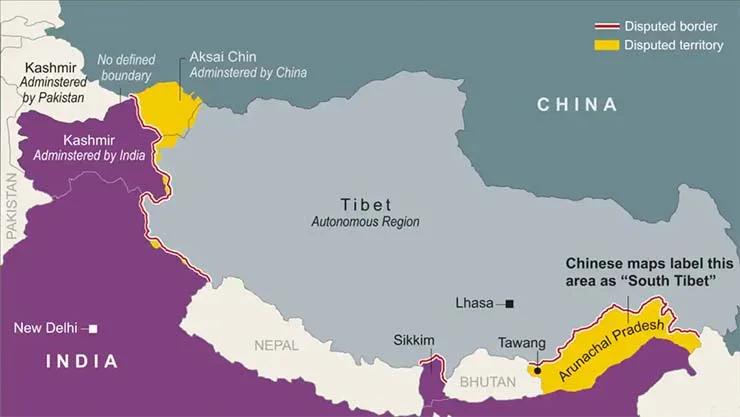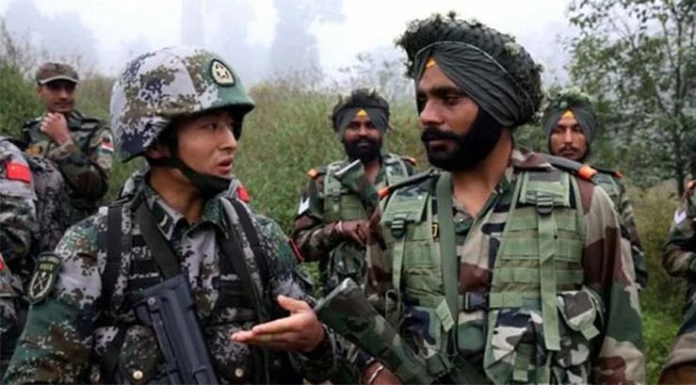With its economy on the rise and military power increasing, India has begun to respond to challenges from Beijing by playing anti-China card deftly and this can be markedly seen in New Delhi’s approach towards the East Asian nation’s core interests like Tibet on which the South Asian country appears giving its northern neighbour a tough time
Except for briefly in 2018-19 when India stopped playing overt anti-China card, there was, in truth, no let-up in New Delhi’s campaign against Beijing; it was overwhelmingly present in New Delhi’s approach, right from the first term of the Narendra Modi government in 2014.
Assertive anti-China strategy
In its second term, especially after the Galwan Valley incident in June 2020, the Modi government toughened India’s stand against China when it signed a $375 million deal with the Philippines for the supply of BRAHMOS supersonic missiles in 2022 and stood by Philippines in its dispute with Beijing over the South China Sea.
In the fast-changing geopolitical situation in the Indo-Pacific region, this step by India was seen as a major development, as it broadly hinted about New Delhi’s assertive defence and strategic positioning vis-à-vis Beijing on its core interests.
China, under President Xi Jinping, has been invariably more unpredictable and less pragmatic in its approach towards India, especially in eastern Ladakh and Arunachal Pradesh. Given this, New Delhi has upped the ante against Beijing and in the third term of the Modi government, India’s move against its northern rival, has already started unravelling.
It began with force on June 5 when, following the victory of the NDA government in the parliamentary elections, PM Modi received a congratulatory message from Taiwan President Lai Ching-te.
India has begun to respond to challenges from Beijing by playing anti-China card deftly and this can be markedly seen in New Delhi’s approach towards the East Asian nation’s core interests like Tibet
While congratulating PM Modi for his election victory, the Taiwanese President in his post on social media wrote: “We look forward to enhancing the fast-growing Taiwan-India partnership, expanding our collaboration on trade, technology and other sectors to contribute to peace and prosperity in the Indo-Pacific.”
Sensing it as a big opportunity to rub salt into the raw wounds of China, PM Modi not only responded to Taiwan President Lai Ching-te’s congratulatory message, but also wrote in his post on social media, “I look forward to closer ties as we work towards mutually beneficial economic and technological partnership.”
It created a huge furore in China with Beijing lodging a strong protest with India against PM Modi’s response to a congratulatory message from the Taiwanese President.
Deft play of Tibet card
However, by the time heat over PM Modi’s response to the Taiwanese President could settle down, a US Congressional delegation led by the House Foreign Affairs Committee Chairman Michael McCaul landed in Dharamsala to meet Tibetan spiritual leader Dalai Lama on June 18.
This was a rare decision by India to allow a foreign delegation to visit Dharamsala to meet the Dalai Lama, who embodies Tibetan resistance to the Chinese occupation. In a world where many countries, including Europe and many Buddhist states, are surrendering to China’s dictate on issues related to Tibet and the Dalai Lama (as they are not allowing the Tibetan spiritual leader’s entry in their countries), India and the US have stood up to Beijing’s bullying.
China, under President Xi Jinping, has been invariably more unpredictable and less pragmatic in its approach towards India, especially in eastern Ladakh and Arunachal Pradesh
More than this, a push came to shove when PM Modi met a US delegation, whose delegates included Nancy Pelosi, ex-Speaker of the House of Representatives, Mariannette Miller, Gregory Meeks, Nicole Malliotakis, Jim McGovern, and Ami Bera on June 20 in New Delhi.
The meeting openly suggested India’s crafty move to antagonise China, especially at the time when Beijing’s assertive approach over the South China Sea, the East China Sea and the Taiwan Strait has called into question Beijing’s motive.
To give China a dose of its own medicine, India is planning to rename around 30 places within China’s Tibet Autonomous Region. As per The Diplomat, the chosen names have been thoroughly researched and are rooted in historical significance and ties to the Tibetan region. It is said that the Indian Army will publish these names soon and incorporate them into updated maps of the area along the Line of Actual Control (LAC).

Keeping China on toes
The meaning is clear: India is ready to call a spade a spade. Some experts argue that New Delhi has not been new to giving China a tough time on the Tibetan issue. Right from the inauguration of the Modi government in its first-five-year term in 2014, Tibet was at the core of India’s assertive foreign policy approach towards China.
A hint of this could be seen in the presence of Lobsang Sangey, the then President of the Central Tibetan Authority (the Tibetan government-in-exile), during the swearing-in ceremony of the Modi government in May 2014; Sangey was among the special invitees to the event.
In 2017, at the height of the Doklam crisis, when Indian soldiers were locked in the 73-day standoff with Chinese PLA at the India-Bhutan-China tri-junction, New Delhi allowed Lobsang Sangey to unfurl the Tibetan flag at Pangong Tso in Ladakh in the western sector of the disputed India-China border.
On April 4, 2017, India facilitated the Dalai Lama’s visit to Arunachal Pradesh. Though, it was not the first ever visit of the Tibetan spiritual leader to India’s Northeast State. Earlier, he had visited Arunachal Pradesh on six occasions: in March 1983, December 1996, October 1997, December 2003, and November 2009. The Tibetan spiritual leader had also visited Tawang during his visit to Arunachal Pradesh in November 2009.
Beijing lodged a strong protest with India against PM Modi’s response to a congratulatory message from the Taiwanese President
However, India changed the track temporarily and quietly shelved the Tibet card in early 2018. India’s External Affairs Ministry issued a directive to government officials in February 2018 to stay away from events organised by the Central Tibetan Authority to mark the 60th anniversary of Tibetans flight to India. India did this just before the first ever, informal summit between PM Modi and Chinese President Xi Jinping in Wuhan in April 2018.
After the Galwan incident in June 2020, India once again started playing its Tibet card. It publicly recognised the Special Frontier Force, an elite paratrooper unit that draws its personnel mainly from the exiled Tibetan community in India. Though formed in the post-1962 India-China war, the SFF was recognised as a covert force till 2020.
While it marked a shift in India’s policy towards Tibet, on July 6, 2021, PM Modi publicly wished the Dalai Lama well on his 86th birthday. Prime Minister Modi took a similar move on his 87th birthday in 2022, 88th birthday in 2023 and 89th birthday this year. He has already been officially designated as India’s “most esteemed and honoured guest.”
In April 2023, PM Modi inaugurated the first global Buddhist summit in New Delhi; the Ministry of Culture in collaboration with the International Buddhist Confederation hosted it. Such developments indicate clearly that India is prepared to inflict pain on China, in areas where it matters.
–The writer is a senior journalist with wide experience in covering international affairs. The views expressed are of the writer and do not necessarily reflect the views of Raksha Anirveda
–The writer is a senior journalist with wide experience in covering international affairs. The views expressed are of the writer and do not necessarily reflect the views of Raksha Anirveda






